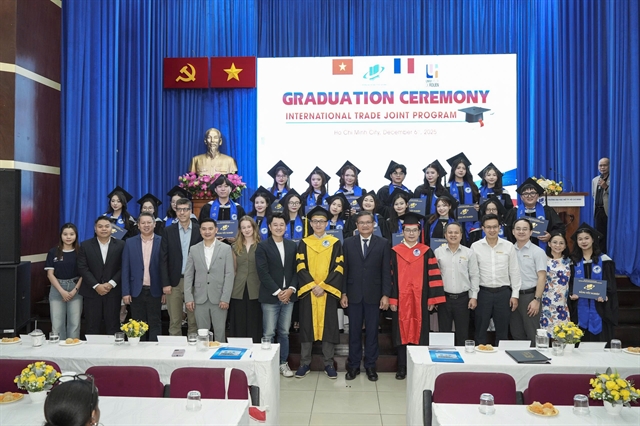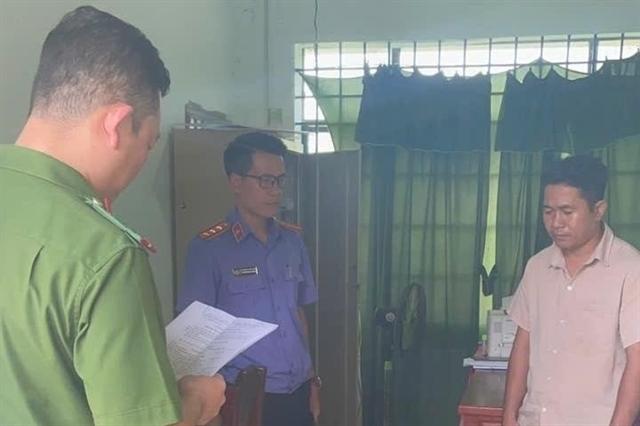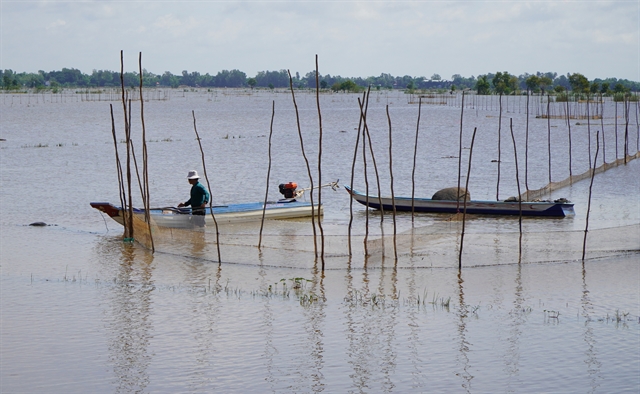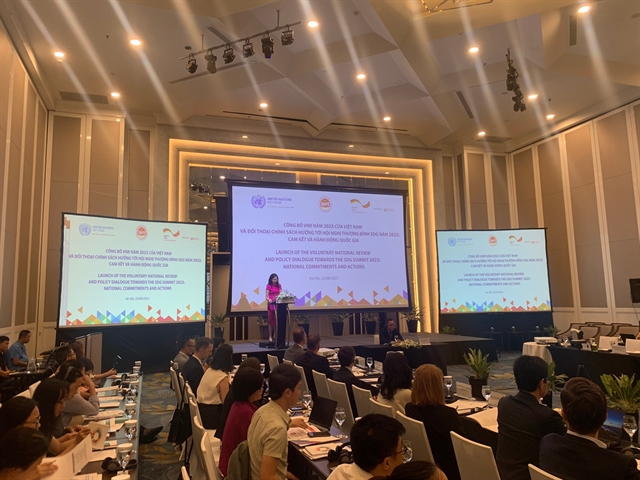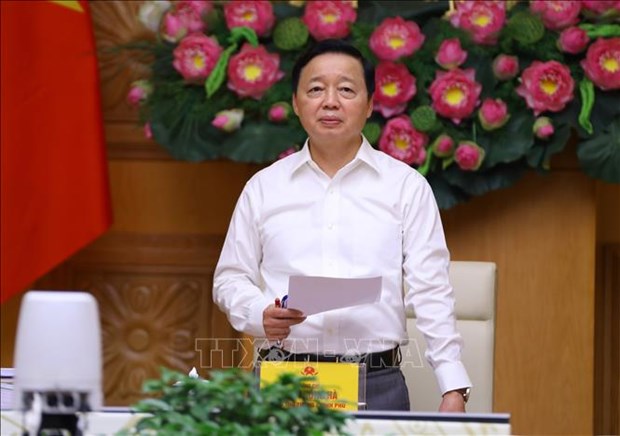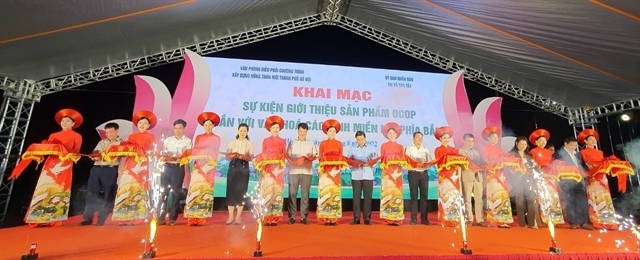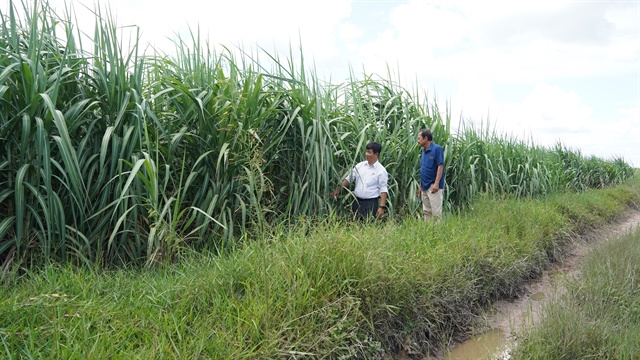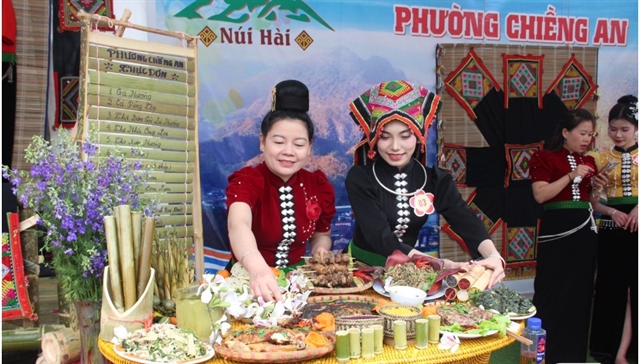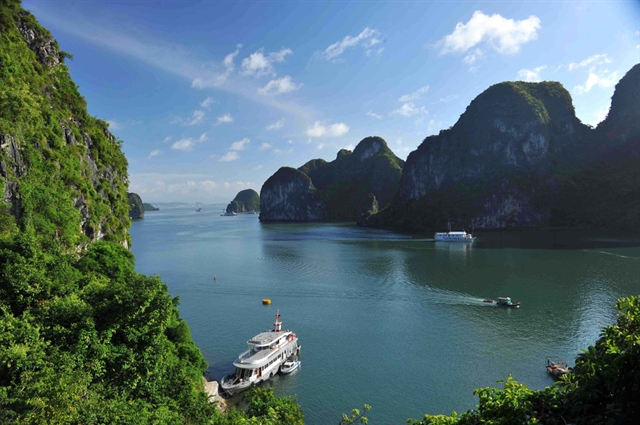
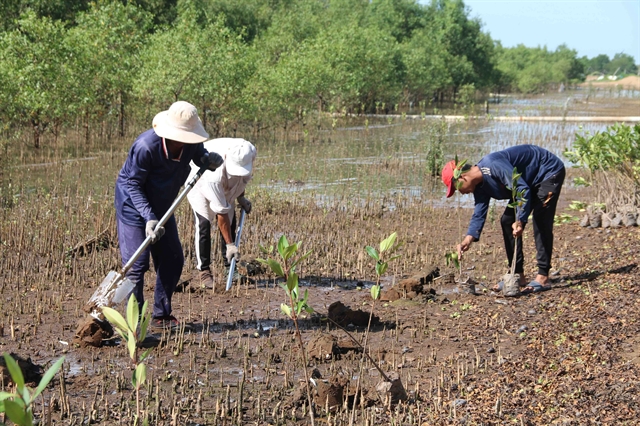 |
| Farmers plant mangrove forests in Trà Vinh Province’s Cầu Ngang District. — VNA/VNS Photo Thanh Hòa |
TRÀ VINH — The Mekong Delta province of Trà Vinh is encouraging farmers in coastal areas to grow mangrove forests and breed aquatic species in them.
The model has helped develop forests sustainably, improve farmers’ incomes, mitigate the impacts of climate change, and protect the environment, according to the provincial Department of Agriculture and Rural Development.
Trần Văn Dũng, its deputy director, said the province plans to add 800ha of mangroves under a 2021-25 project to grow protective forests in coastal areas to cope with climate change.
To encourage households and organisations to grow forests, the province is subsidising half the cost of buying seedlings, up to VNĐ37 million (US$1,600) per hectare, for a minimum of 0.3ha of forests, he said.
The southern province aims to increase its forest cover to 4.2 per cent by 2025 compared to 4.1 per cent at the moment.
It has more than 9,600ha of forests.
Farmers have planted some 4,000ha of forests and breed fish and other aquatic species in them.
Authorities have planted 492,000 trees in various areas to combat erosion, mitigate the impacts of strong winds, protect coastal areas, and stabilise the environment for aquaculture and agriculture.
In the coastal districts of Duyên Hải, Cầu Ngang and Châu Thành, and Duyên Hải Town, households and organisations have been allocated more than 5,000ha of mangrove forests to protect and breed aquatic species such as black tiger shrimp, mud crab and blood cockle in them.
They are paid VNĐ500,000 ($21) per hectare per year for the task.
By exploiting the forest resources and breeding aquatic species, they earn an average of VNĐ60-70 million ($2,500-2,900) per hectare.
Trần Quốc Đoàn, head of the Duyên Hải District Bureau of Agriculture and Rural Development, said more than 1,000 local households breed shrimp and fish in 850ha of mangrove.
The forest-shrimp-fish farming model has no disease outbreaks or other risks, and farmers harvest year round, he said.
Farmer Huỳnh Văn Tài in the district’s Long Vĩnh Commune adopted the forest-shrimp farming model on his 4ha land five years ago.
He has been raising 50,000 black tiger shrimp and 6,000 mud crabs every year to earn more than VNĐ350 million ($14,700).
Duyên Hải District has planted more than 500ha of mangrove trees, which help protect coastal areas and agriculture in the commune of Đông Hải.
In 2005, Trà Vinh Province People’s Committee decided to protect and expand the Long Khánh mangrove forest, which spreads over 600ha in the district.
Of this, the 150ha, 30 year-old tall-stilt mangrove forest is bio-diverse, with many plants, birds and animals including monitor lizards and cobras.
Cầu Ngang District has planted more than 500ha of mangrove apple forests, which help protect a river dyke between Vinh Kim Commune and the Thâu Râu Estuary.
Phạm Văn Sánh in the district’s Mỹ Long Nam Commune said after the mangrove apple forests were expanded, mud crabs and clams have appeared in large quantities in the mud flats along rivers and coastal areas.
Nguyễn Văn Linh, deputy head of the Châu Thành District - Cầu Ngang District Forest Protection Bureau, said mangrove forests help improve the environment, conserve many high-value aquatic species and stabilise the lives of local people.
In the past, large areas of mangrove apple forests in mud flats and coastal areas in riverine island communes of Long Hòa and Hòa Minh in Châu Thành District were cut down.
Local authorities in the two communes have strengthened communication to enhance public awareness of the benefits of growing and protecting forests.
Long Hòa Commune has recovered 300ha of mangrove apple forests and has 100ha of mudflats where more can be grown.
In Duyên Hải Town, after mangrove trees were planted in Trường Long Hòa Commune’s Nhà Mát and Cồn Trứng hamlets, farmers have been able to grow two watermelon crops and one rice crop a year since the forest blocks strong ocean winds which blow sand on crops.
In the past, they could only grow one watermelon and rice crop apiece.
Farmers in the two hamlets have an average income of VNĐ120 million ($5,000) per hectare per year.
The province has zoned 12,250ha of forests and 11,730ha for aquaculture in coastal areas. — VNS

